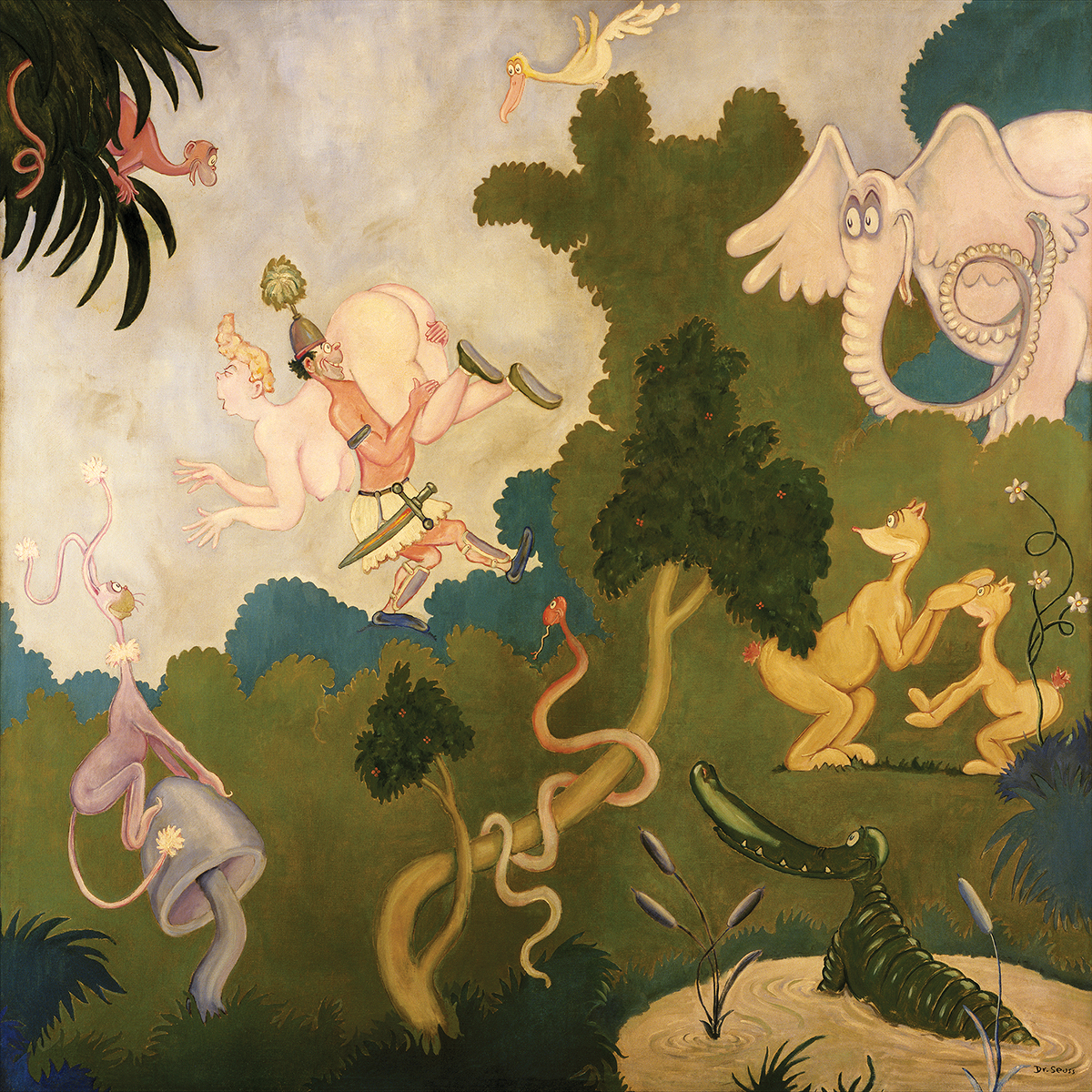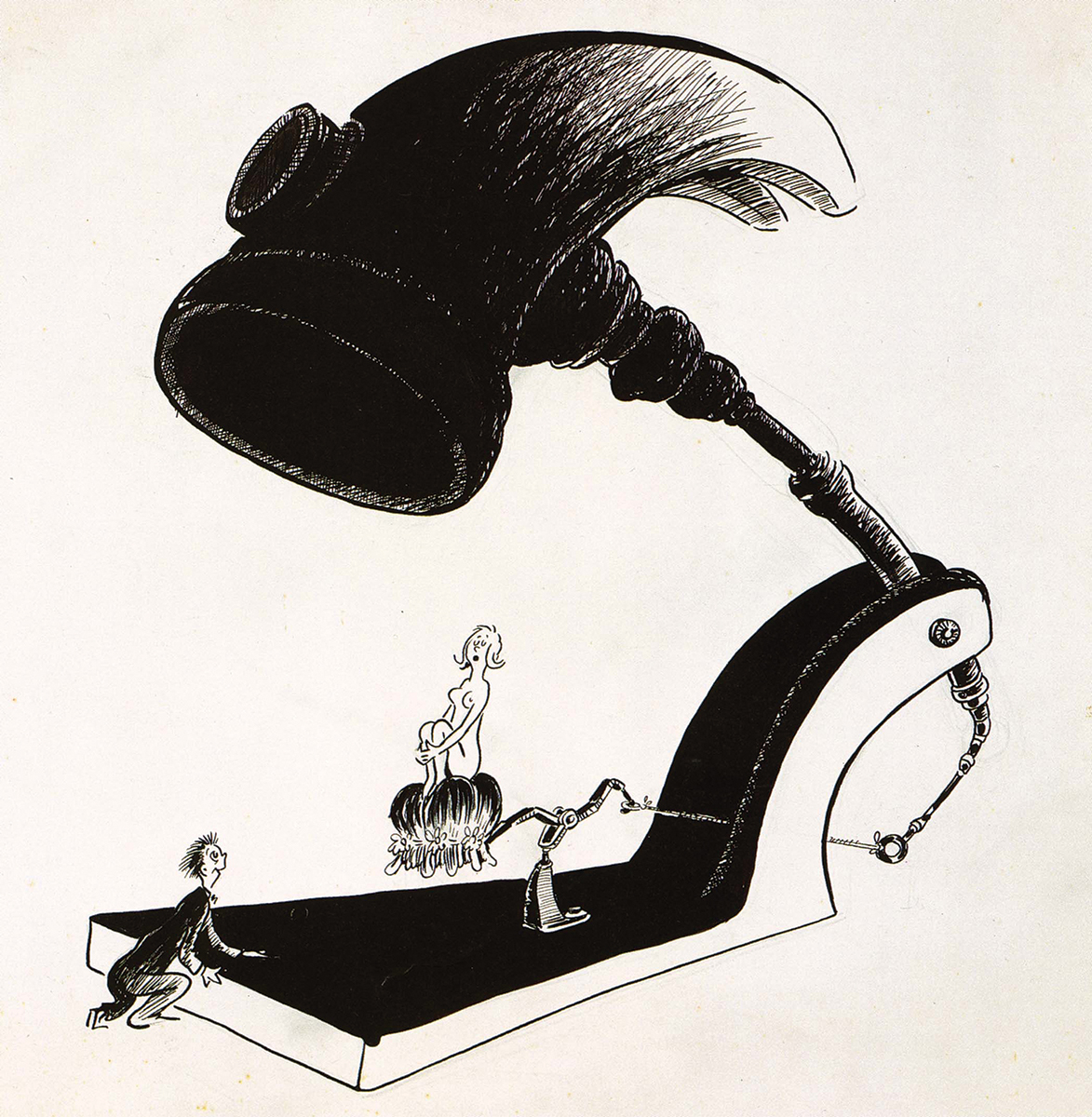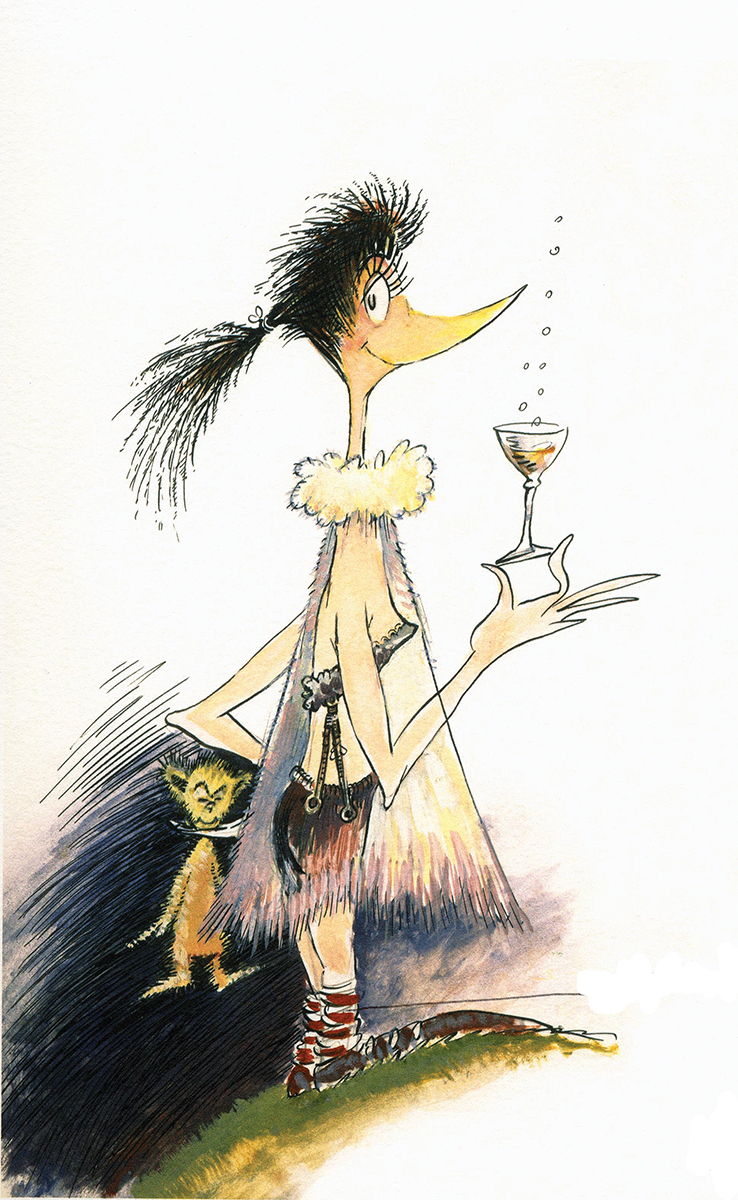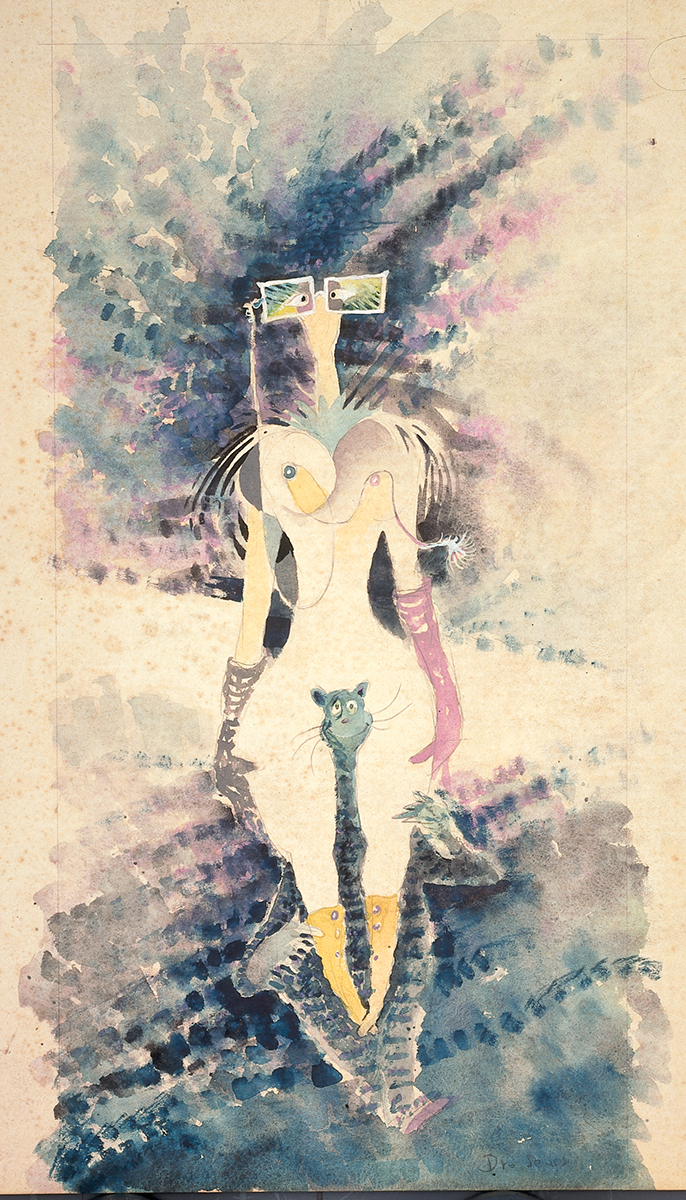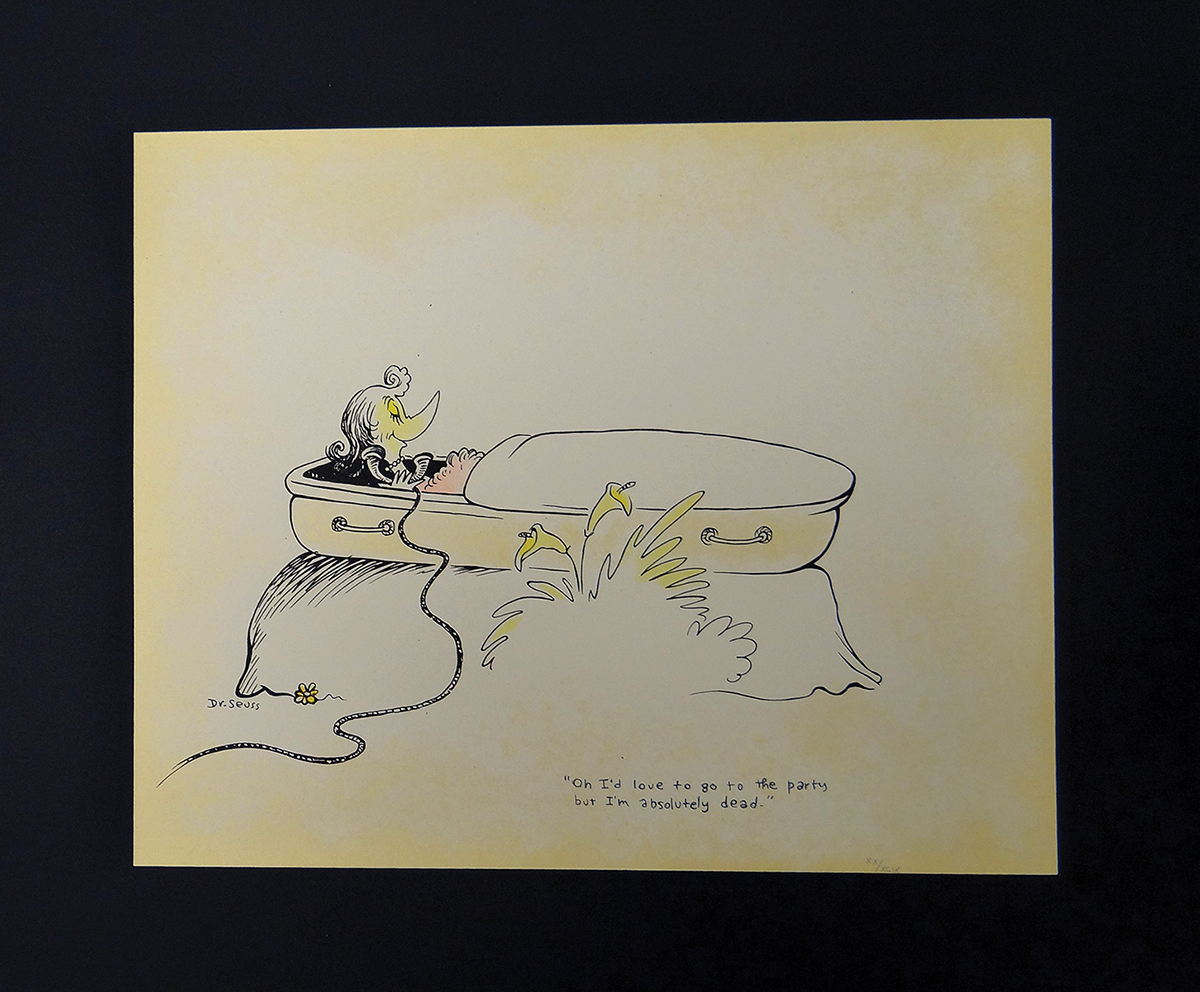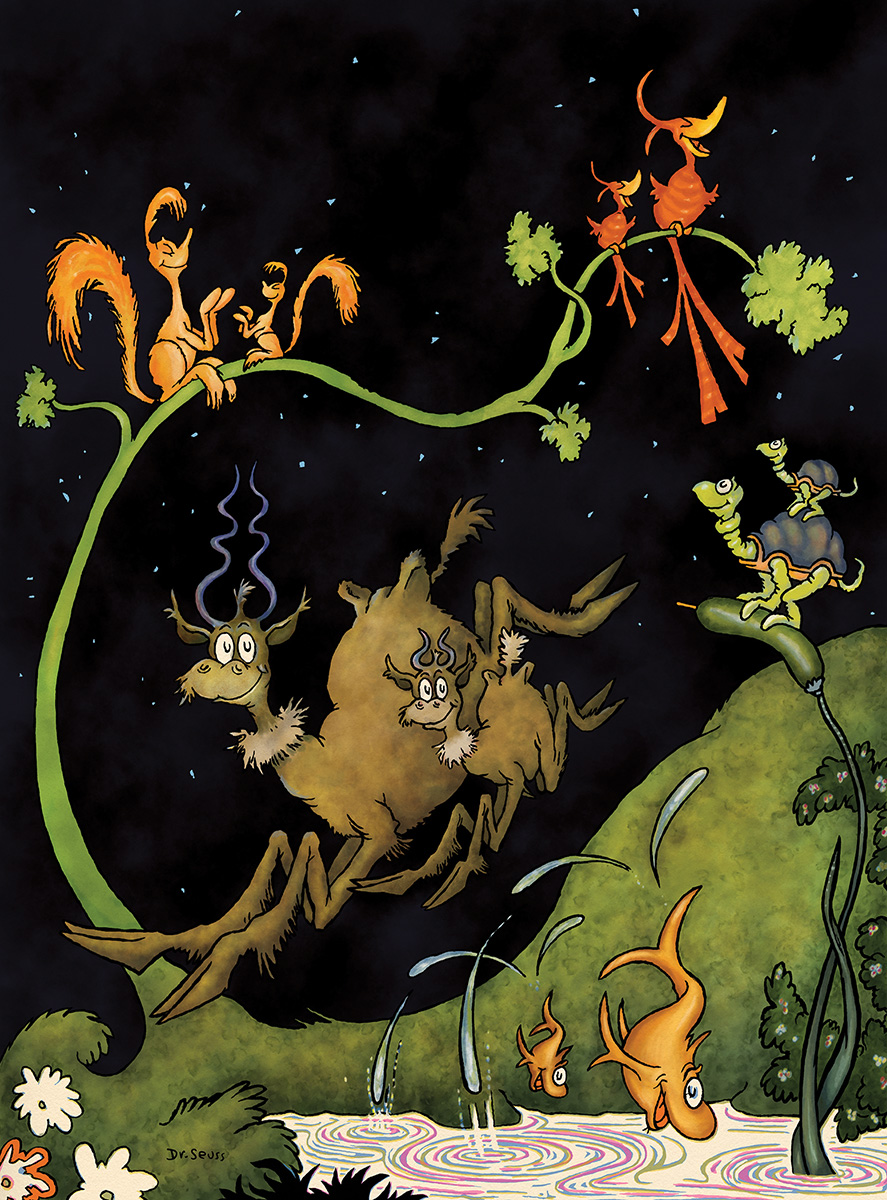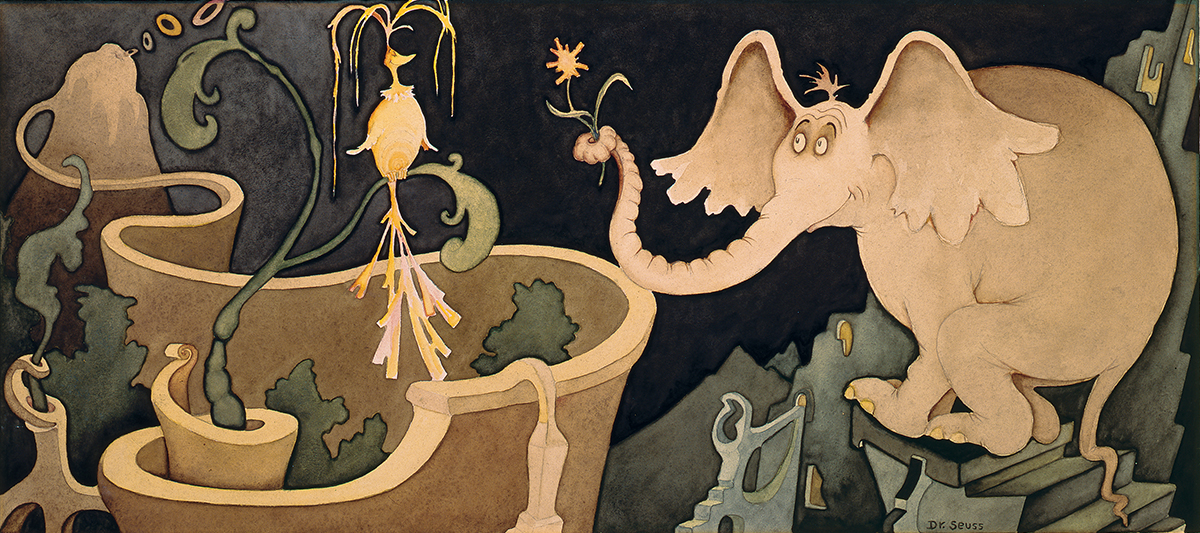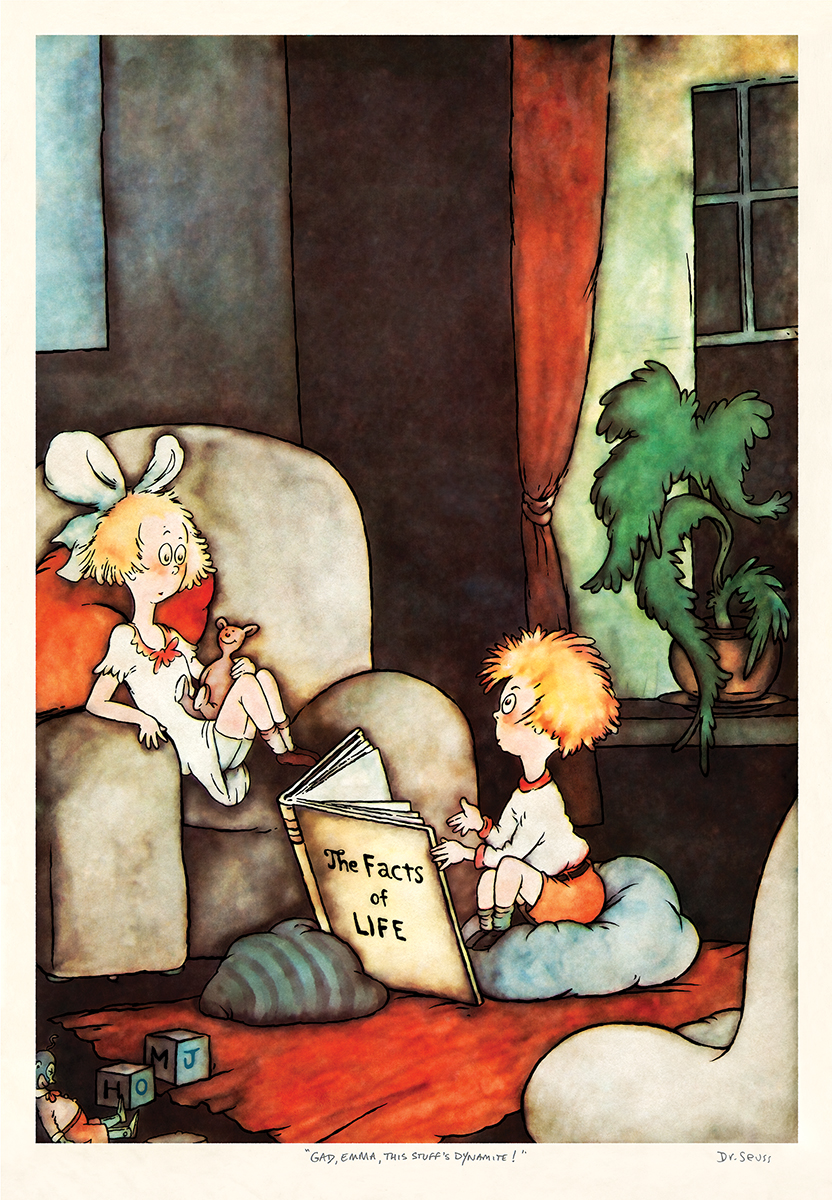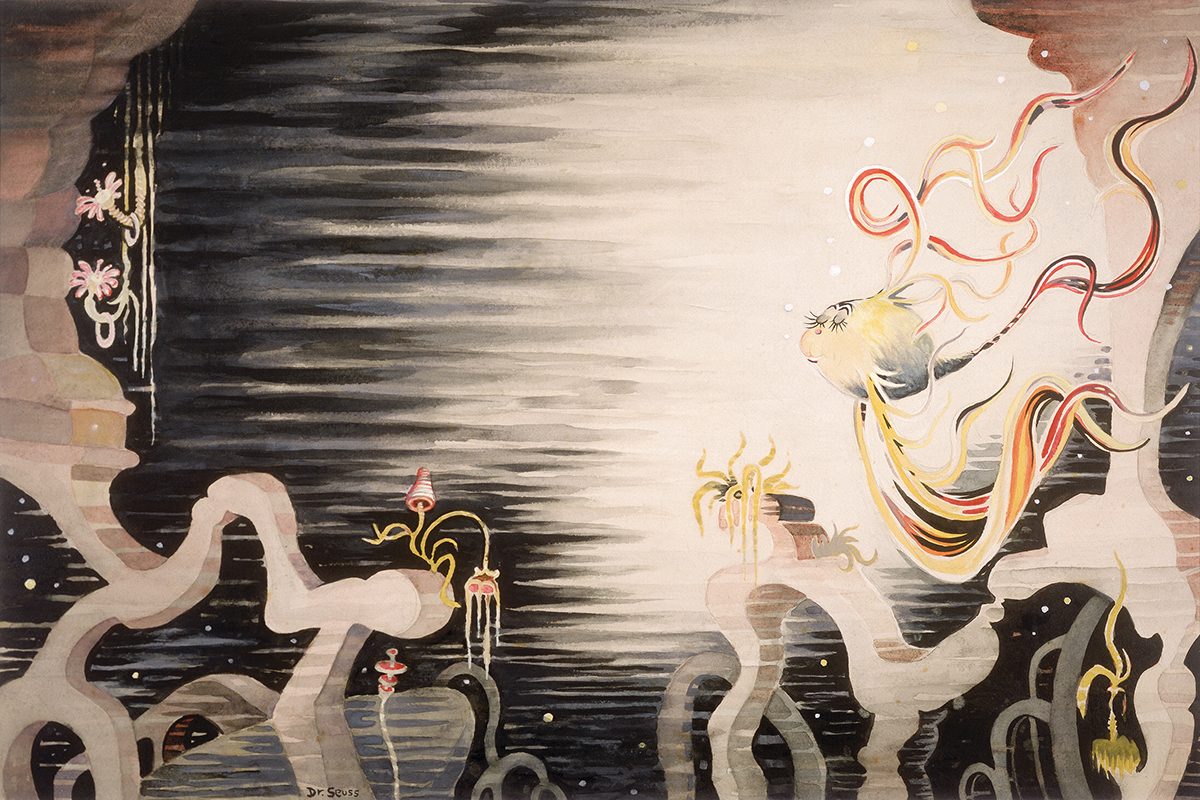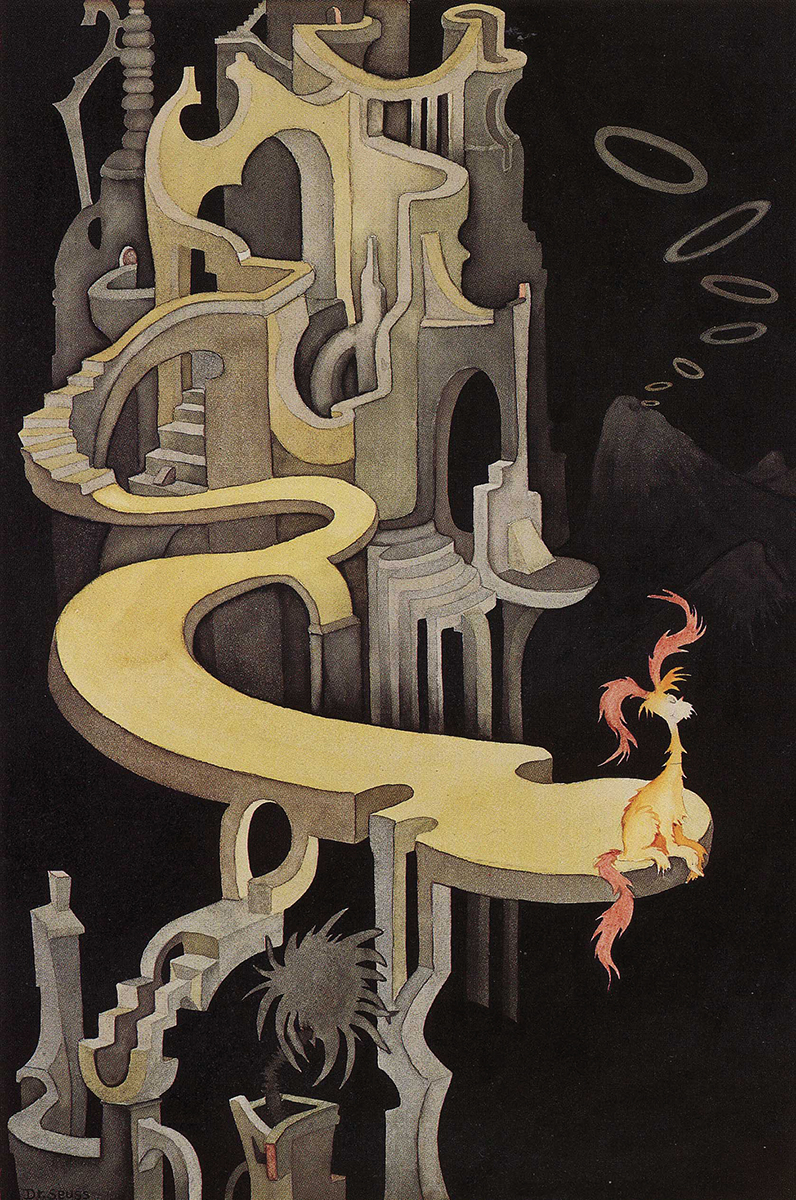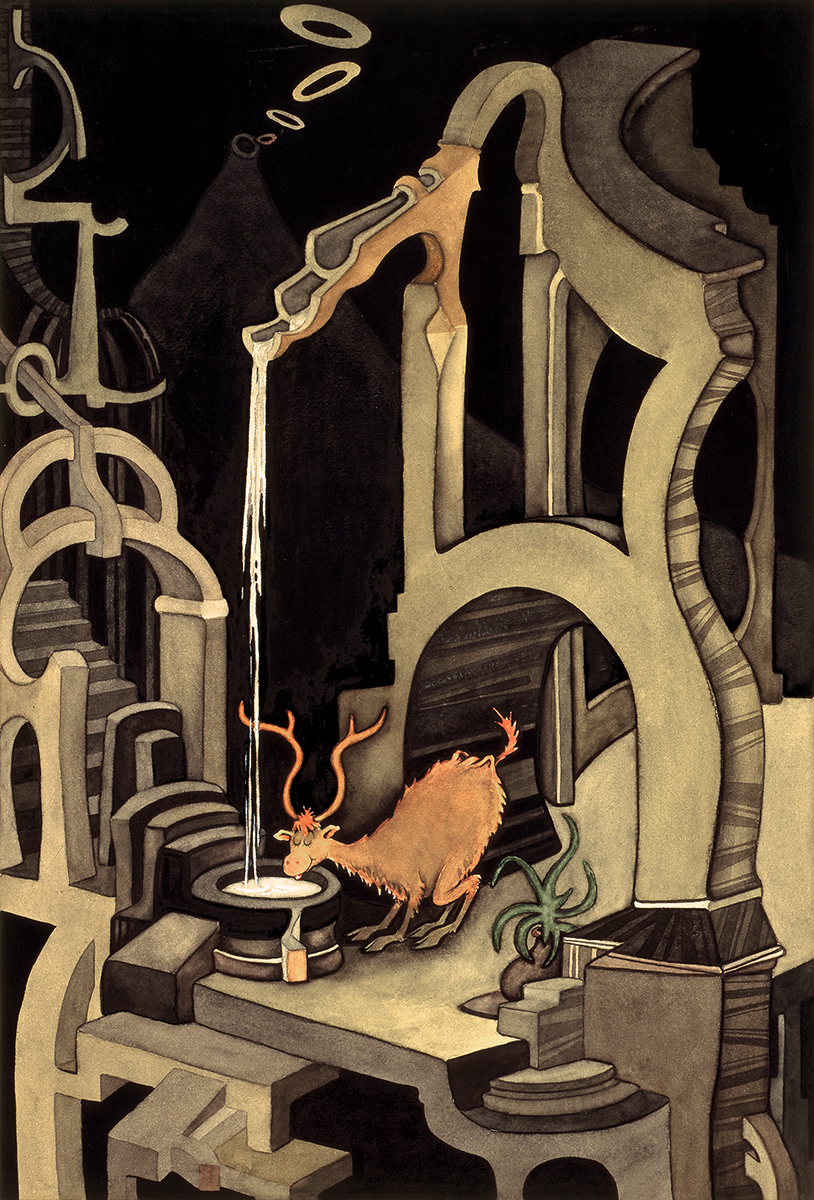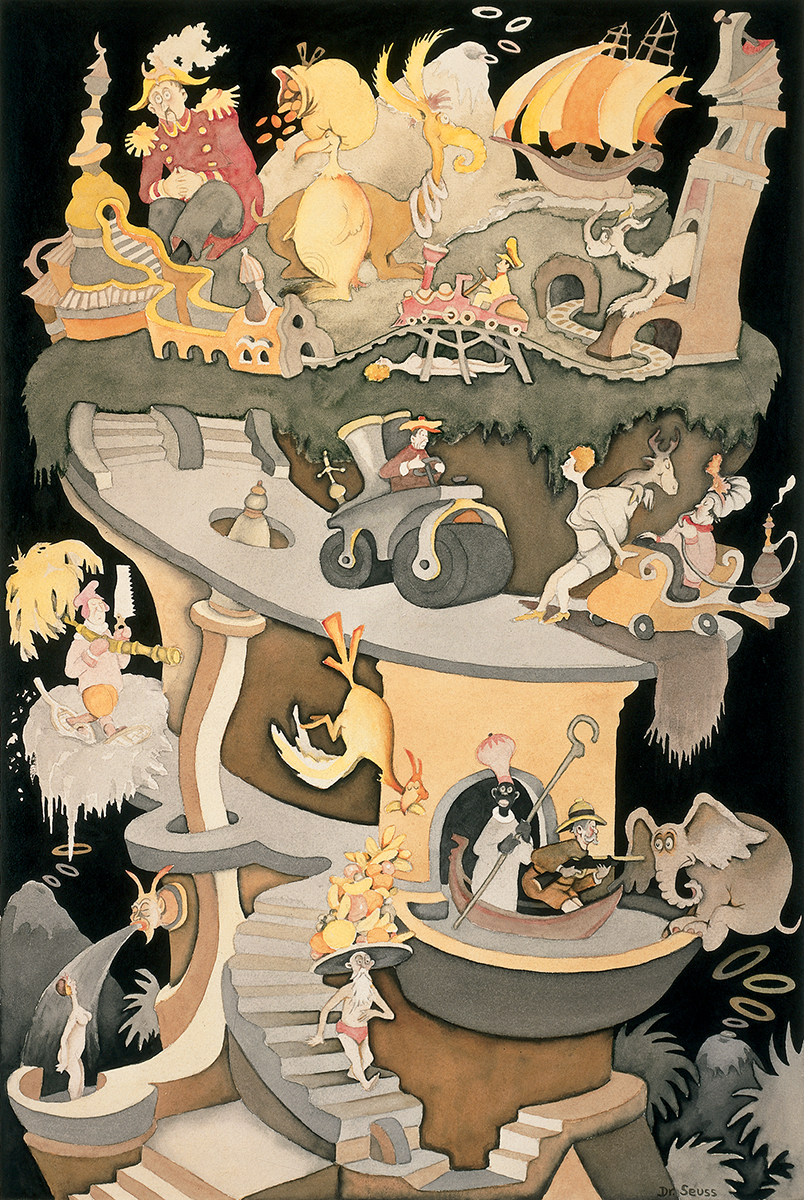“Painted during his Deco Period, this artwork presents an early example of just how rich Dr. Seuss’s grown-up humor could be and would become.”
About
Theodor Seuss Geisel’s (aka Dr. Seuss’s) grown-up humor often catches us off-guard, as we forget (or were unaware) that he was editor-in-chief of his college humor magazine and had a significant career as an advertising man, editorial cartoonist, and essayist years before his vocation in children’s literature. Ted's painting The Facts of Life appeared on the back cover of the July 1937 issue of Ballyhoo, the magazine which was the inspiration for—and predecessor to—Mad magazine. Painted during his Deco Period, this artwork presents an early example of just how rich Dr. Seuss’s grown-up humor could be and would become.
As is often the case with Dr. Seuss’s paintings, his titles and captions cleanly deliver punch lines which add depth and dimension to his singular brand of parlor humor. Here he takes a whispered subject and plops it down on the parlor table through the central character’s proclamation: “Gad, Emma, this stuff’s dynamite!”
Parlor Humor
What makes Dr. Seuss's parlor humor so extraordinary is how it flawlessly delivers his “wink–wink, nudge–nudge” sensibility towards grown-up humor; an awareness so nuanced and clever that it never crosses the line, but rather exquisitely delivers his wit above the heads of children so as not to capture them in the joke.
Ted instinctively knew the fine line between childhood and adulthood and could weave back and forth seamlessly. We take this moment to present a curated collection of works from this genre including: (top row) Abduction of the Sabine Woman, The Rather Odd Myopic Woman Riding Piggyback on One of Helen’s Many Cats and Martini Bird (bottom row) Oh, I’d love to go to the party, but I’m absolutely dead and Booby Trap.
Deco Period
Many of Theodor Seuss Geisel’s “Midnight Paintings” from the 1930s and ‘40s used an artistic element derived from his most successful work as a commercial illustrator. Referred to as Geisel’s Deco Period, these years allude to his instinctive use of saturated black backgrounds combined with art deco influences often found among the architecture of his artworks.



